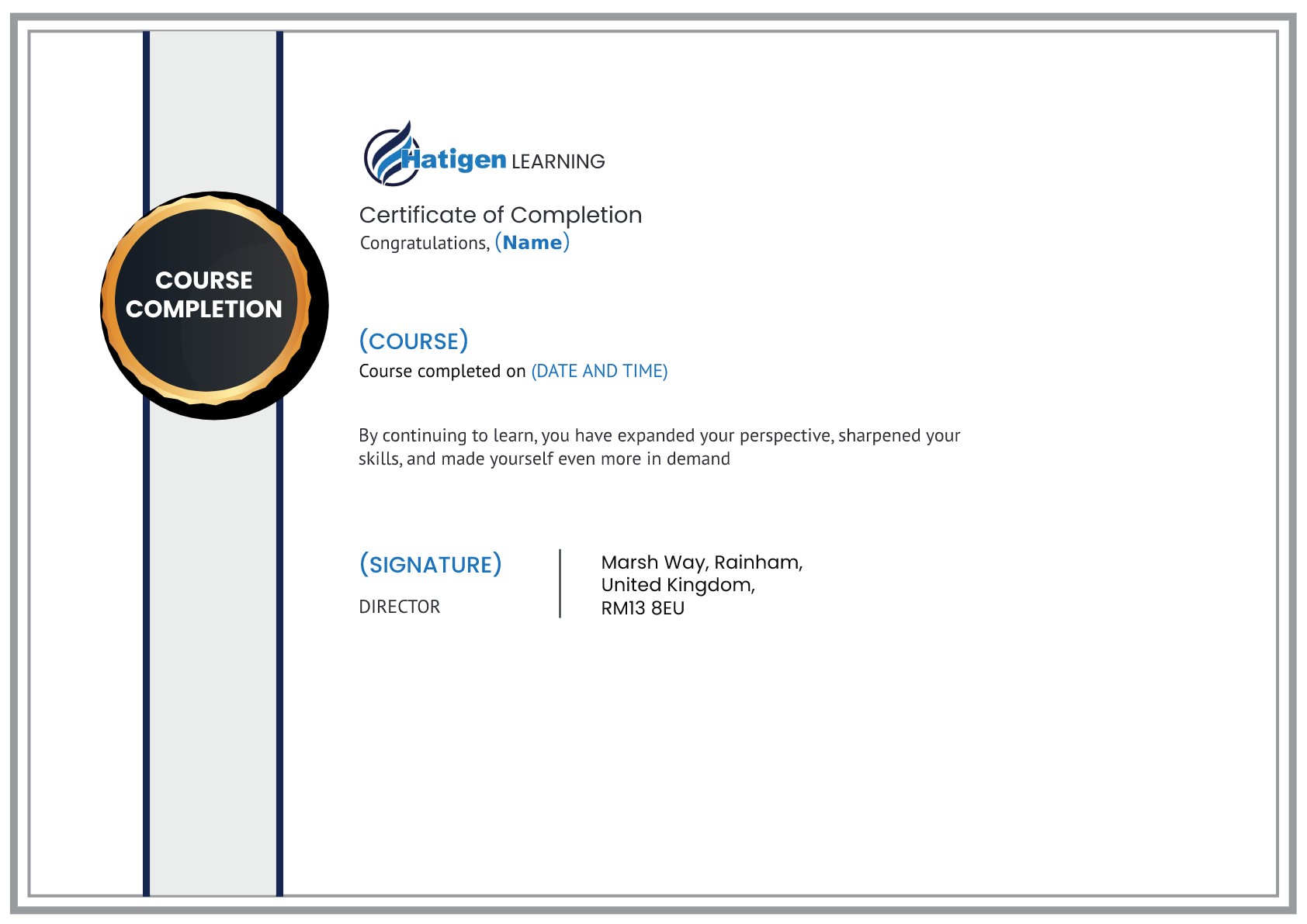Machine Learning Course Overview
Being the subset of artificial intelligence, machine learning is now a highly demanded career option that enables you to become a successful machine learning engineer. Furthermore, in this machine learning course, you’ll get an in-depth knowledge of machine learning concepts such as regression, supervised and unsupervised learning, developing algorithms, classification, modeling, etc.
Machine Learning Online Course – Key Features
- Trusted content.
- Re-learn for free anytime in a year.
- Rigorous assignments and assessments.
- Learn at your own pace.
- Mandatory feedback sessions.
- Mock-interviews.
- Hands-on real-time experience.
- Free mentorship.
- Live chat for instant solutions.
- Job ready employees post-training.
- End-to-end training.
- Download the certificate after the course.
Machine Learning Course – Benefits
The global market for machine learning is expected to reach $90.1 billion in 2026 with a CAGR – compound annual growth rate for the period of 2021-2026 to be 39.4%.
Designation
Annual Salary
Hiring Companies
Job Wise Benefits
Designation
Machine Learning Engineer
UK

Hiring Companies

Designation
Data Scientist
UK

Hiring Companies

Machine Learning Certification Course – Training Options
Online Machine Learning Course – Curriculum
Eligibility
Graduates who are aiming to build their careers in Data Science and Machine Learning are eligible for this course. Adding to this, the Machine Learning Online Training Course is best suited for intermediate professionals with job roles such as Business Analysts, Developers, and Analytics Managers who are aiming to work as Machine Learning Engineers.
Pre-requisites
Students who have a good understanding of mathematical concepts and basic statistics at the college level can opt for this Machine Learning Course. Also, basic knowledge of python programming is a plus. Furthermore, before you join the Machine Learning certification course, knowledge in some fundamental subjects such as math refresher, python for data science, and statistics is also beneficial.
Course Content
-
1.01 Course Introduction
-
1.02 Demo: Jupyter Lab Walk - Through
-
2.01 Learning Objectives
-
2.02 Relationship between Artificial Intelligence, Machine Learning, and Data Science: Part A
-
2.03 Relationship between Artificial Intelligence, Machine Learning, and Data Science: Part B
-
2.04 Definition and Features of Machine Learning
-
2.05 Machine Learning Approaches
-
2.06 Key Takeaways
-
3.01 Learning Objectives
-
3.02 Supervised Learning
-
3.03 Supervised Learning: Real Life Scenario
-
3.04 Understanding the Algorithm
-
3.05 Supervised Learning Flow
-
3.06 Types of Supervised Learning: Part A
-
3.07 Types of Supervised Learning: Part B
-
3.08 Types of Classification Algorithms
-
3.09 Types of Regression Algorithms: Part A
-
3.10 Regression Use Case
-
3.11 Accuracy Metrics
-
3.12 Cost Function
-
3.13 Evaluating Coefficients
-
3.14 Demo: Linear Regression
-
3.15 Challenges in Prediction
-
3.16 Types of Regression Algorithms: Part B
-
3.17 Demo: Bigmart
-
3.18 Logistic Regression: Part A
-
3.19 Logistic Regression: Part B
-
3.20 Sigmoid Probability
-
3.21 Accuracy Matrix
-
3.22 Demo: Survival of Titanic Passengers
-
3.23 Overview of Classification
-
3.24 Classification: A Supervised Learning Algorithm
-
3.25 Use Cases
-
3.26 Classification Algorithms
-
3.27 Performance Measures: Confusion Matrix
-
3.28 Performance Measures: Cost Matrix
-
3.29 Naive Bayes Classifier
-
3.30 Steps to Calculate Posterior Probability: Part A
-
3.31 Steps to Calculate Posterior Probability: Part B
-
3.32 Support Vector Machines: Linear Separability
-
3.33 Support Vector Machines: Classification Margin
-
3.34 Linear SVM: Mathematical Representation
-
3.35 Non linear SVMs
-
3.36 The Kernel Trick
-
3.37 Demo: Voice Classification
-
3.38 Key Takeaways
-
4.01 Learning Objectives
-
4.02 Decision Tree: Classifier
-
4.03 Decision Tree: Examples
-
4.04 Decision Tree: Formation
-
4.05 Choosing the Classifier
-
4.06 Overfitting of Decision Trees
-
4.07 Random Forest Classifier Bagging and Bootstrapping
-
4.08 Decision Tree and Random Forest Classifier
-
4.09 Demo: Horse Survival
-
4.10 Key Takeaways
-
5.01 Learning Objectives
-
5.02 Overview
-
5.03 Example and Applications of Unsupervised Learning
-
5.04 Clustering
-
5.05 Hierarchical Clustering
-
5.06 Hierarchical Clustering: Example
-
5.07 Demo: Clustering Animals
-
5.08 K-means Clustering
-
5.09 Optimal Number of Clusters
-
5.10 Demo: Cluster Based Incentivization
-
5.11 Key Takeaways
-
6.01 Learning Objectives
-
6.02 Overview of Time Series Modeling
-
6.03 Time Series Pattern Types: Part A
-
6.04 Time Series Pattern Types: Part B
-
6.05 White Noise
-
6.06 Stationarity
-
6.07 Removal of Non Stationarity
-
6.08 Demo: Air Passengers I
-
6.09 Time Series Models: Part A
-
6.10 Time Series Models: Part B
-
6.11 Time Series Models: Part C
-
6.12 Steps in Time Series Forecasting
-
6.13 Demo: Air Passengers II
-
6.14 Key Takeaways
-
7.01 Learning Objectives
-
7.02 Overview
-
7.03 Ensemble Learning Methods: Part A
-
7.04 Ensemble Learning Methods: Part B
-
7.05 Working of AdaBoost
-
7.06 AdaBoost Algorithm and Flowchart
-
7.07 Gradient Boosting
-
7.08 XGBoost
-
7.09 XGBoost Parameters: Part A
-
7.10 XGBoost Parameters: Part B
-
7.11 Demo: Pima Indians Diabetes
-
7.12 Model Selection
-
7.13 Common Splitting Strategies
-
7.14 Demo: Cross Validation
-
7.15 Key Takeaways
-
8.01 Learning Objectives
-
8.02 Introduction
-
8.03 Purposes of Recommender Systems
-
8.04 Paradigms of Recommender Systems
-
8.05 Collaborative Filtering: Part A
-
8.06 Collaborative Filtering: Part B
-
8.07 Association Rule: Mining
-
8.08 Association Rule: Mining Market Basket Analysis
-
8.09 Association Rule: Generation Apriori Algorithm
-
8.10 Apriori Algorithm Example: Part A
-
8.11 Apriori Algorithm Example: Part B
-
8.12 Apriori Algorithm: Rule Selection
-
8.13 Demo: User Movie Recommendation Model
-
8.14 Key Takeaways
-
Andrew McAfee | Building Mind-Machine Combinations: Welcome Technology as Your Colleague
-
Andrew McAfee | Building Mind-Machine Combinations: Reduce Error Rates with Human-Computer Teams
-
California Housing Price Prediction
-
Phishing Detector with LR
Machine Learning Online Training – FAQs
Renowned as the branch of artificial intelligence (AI) and computer science, Machine learning is the study of computer algorithms and the use of data to imitate the way that humans learn.
Machine learning is used to derive key insights that can help to make business decisions to impact key growth metrics. For these insights, a machine learning engineer trains algorithms with the use of statistical methods to make predictions, or classifications.
The three different types of machine learning are supervised learning, unsupervised learning, and reinforcement learning. However, Hatigen trains you in all three different machine learning types through our expert mentors.
Yes, basic coding knowledge is important before you join a machine learning course online. So, you can have knowledge of either Python, R, or Java. It is necessary for certain machine learning tasks such as statistical analysis.
Yes, Machine Learning is a great career option as many present-day applications are developed by this technology. It is one of the top in-demand career fields which offers amazing salaries and growth of postings.
This Machine Learning Training program enables you to learn machine learning concepts from the scratch. Adding to this, you can get through some articles or tutorials that can allow you to get the grip on machine learning techniques.

Reviews
Hatigen IT Services gives a good knowledge in present technology a good platform to learn advance languages
Edward
I like the courses offered with the better facilities provided
Teresa
I've had great experience with Hatigen and the training delivered was great
Ben
First of all i would like to take this opportunity to thanks the instructors the course is well structured and explained the foundations with real world problems with easy to understand the concepts
Winifred
